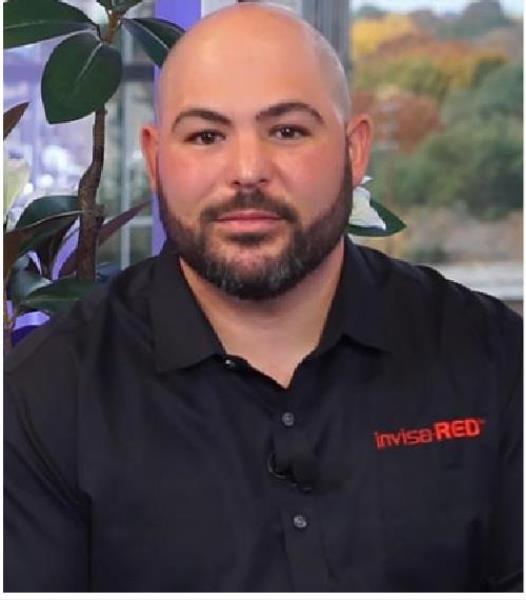How to Build a Team-Driven Practice That Runs Without You
August 1 2025 Stephen ReardonHow to Build a Team-Driven Practice That Runs Without You
August 1 2025 Stephen Reardon
MOST CHIROPRACTIC CLINICS begin as solo operations. One doctor, one vision, one mission. But as growth kicks in, that model becomes the bottleneck. The doctor becomes the marketer, closer, manager, and provider all in one... and burnout sets in fast.
The clinics that thrive long term? They scale through systems and people, not just hustle. This article is your roadmap to transition from a solo show to a team-driven machine that grows with or without you.
If you’re answering phones, closing care plans, troubleshooting billing issues, and adjusting patients all in the same day, you don’t own a business, you own a job.
And as long as you are the only one driving the growth, your clinic’s success is limited to your energy, time, and availability.
The goal of scaling isn’t to do more, it’s to do less of what others can do, so you can focus on what only you can do.
Step 1: Build an Org Chart Before You Need It
Most clinics wait too long to define roles leading to chaotic hires and blurred responsibilities.
Start by building a future-focused org chart with clear roles such as:
• Front Desk Coordinator
• Lead Generation Specialist
• Care Plan Closer or Case Manager
• Clinical Assistant
• Marketing Coordinator
• Office Manager
Even if you don’t have the budget to hire every role yet, mapping the structure helps you identify what’s currently on your plate, and what needs to be delegated first.
Step 2: Document the Way You Work
Your systems can’t live in your head. If you want your team to replicate your excellence, you need to document it.
This means creating SOPs (Standard Operating Procedures) for:
• New patient phone calls
• Consultations and exams
• Payment conversations
• Onboarding care plans
• Marketing and lead tracking
• Reactivation and retention protocols
If a team member left tomorrow, would someone else be able to step in and execute without chaos? If not, you don’t have a business, you have a dependency.
Step 3: Hire for Attitude, Train for Skill
Most chiropractors make one of two mistakes:
1. Hiring based only on experience, not attitude or alignment
2. Hiring without a plan for training or onboarding
What you really want is someone who believes in your mission, shows up with energy, and is coachable.
You can train almost any skill, but you can’t fix poor attitude, gossip, or resistance to feedback.
Build a culture where every team member knows they’re part of something bigger than a paycheck. That’s what creates loyalty, retention, and team-driven growth.
Step 4: Keep Everyone in Their Lane
When roles are vague, performance suffers.
Each team member should have a clearly defined role and limited cross-training. This allows them to:
• Master their area of responsibility
• Take ownership and pride in their results
• Avoid being overwhelmed and confused
Your front desk should not be running ad campaigns. Your marketer shouldn’t be taking X-rays. Focus equals excellence.
When staff stay in their lane, they become experts, and your clinic becomes predictable, scalable, and far more profitable.
Step 5: Empower Your Team to Make Decisions
A scalable clinic isn’t built on micromanagement, it’s built on leadership and autonomy.
Once roles and SOPs are in place, give your team space to execute. Let them:
• Solve small problems without you
• Contribute ideas to improve processes
• Take ownership of outcomes, not just tasks
People support what they help create. Involve them in the mission and growth, and they’ll protect it like it’s their own.
Step 6: Measure and Coach Weekly
What gets measured gets managed. What gets rewarded gets repeated.
Every team member should know:
• Their KPIs (Key Performance Indicators)
• What success looks like in their role
• How often they’ll be reviewed and coached
• Weekly team meetings, one-on-ones, and shout-outs create a feedback loop that drives continuous improvement.
Your job becomes less about doing and more about developing, which is how real leaders scale.
Step 7: Fire Yourself (From Most Things)
Eventually, the ultimate move is to fire yourself from everything except the work you love and are uniquely suited for.
For some chiropractors, that might be adjusting. For others, it might be leading, marketing, or expanding locations.
You should not be:
• Running day-to-day operations
• Managing every patient conversation
• Putting out fires daily
By duplicating your knowledge through SOPs and your influence through team leadership, you finally achieve what most chiropractors never do: freedom.
Going from solo to scalable is the most powerful shift you can make not just for your income, but for your impact and quality of life.
When your business runs without you, you regain time, energy, and clarity. You can grow your brand, open new locations, or finally take a real vacation without panic.
Start today: map your org chart, define your systems, hire the right people, and let your clinic grow beyond your personal capacity.
Coming Next Month: “Retention-First Practice: How to Keep Patients for Years — Not Visits”
We’ll break down the art and science of retention, including reactivation campaigns, wellness care transitions, and how to ethically maximize lifetime value.

Stephen Reardon, founder and CEO of IR Technology, is the inventor of an FDA-Cleared medical device the Elite 12. With 15+ years in medical tech and entrepreneurship, led IR Technology’s exponential growth, now adopted by thousands of practices nationwide. He also owns a seven-figure medical practice. For more information call 888.221.7119, email [email protected] or visit lnvisaRed.com.
 View Full Issue
View Full Issue






